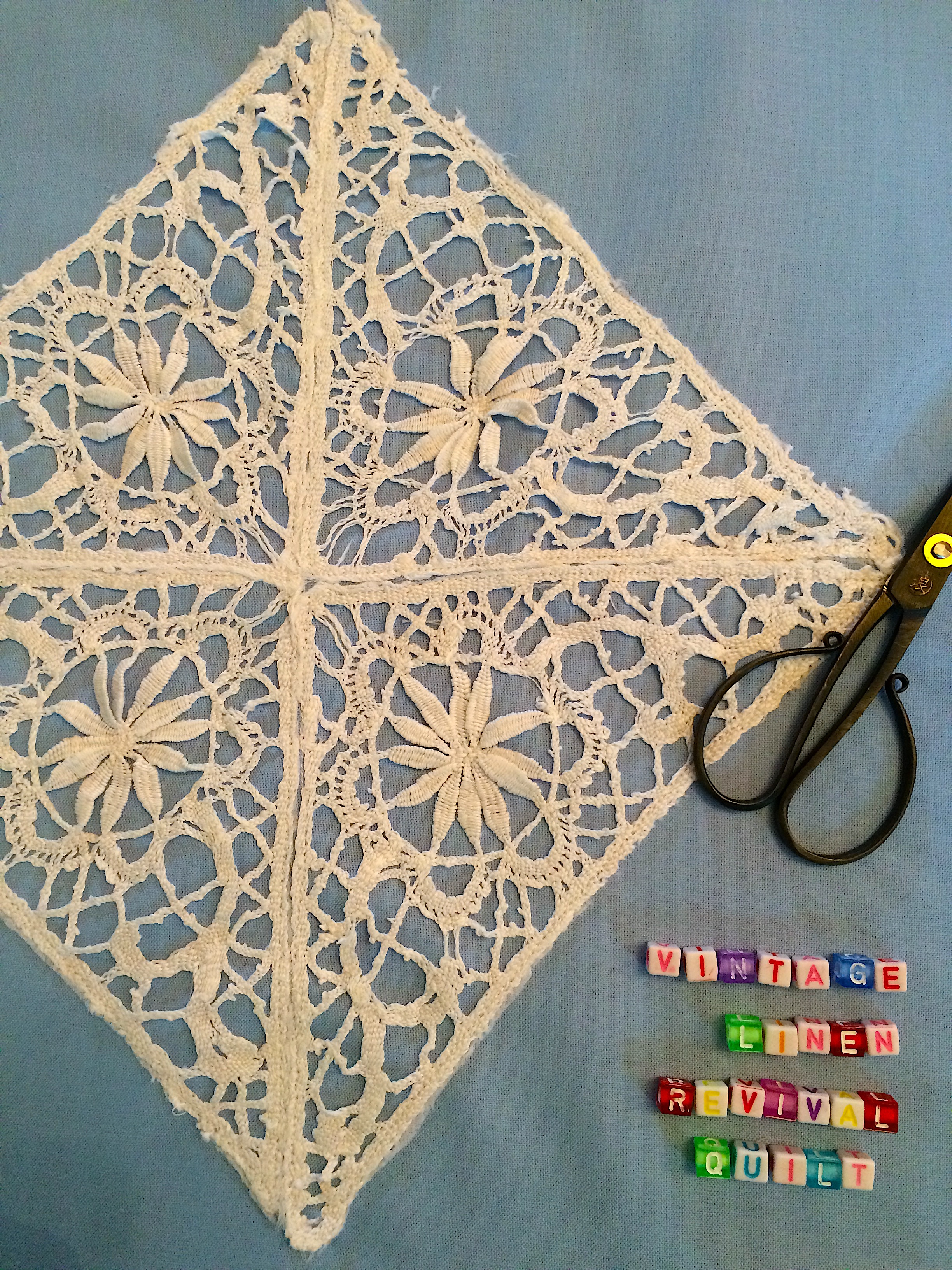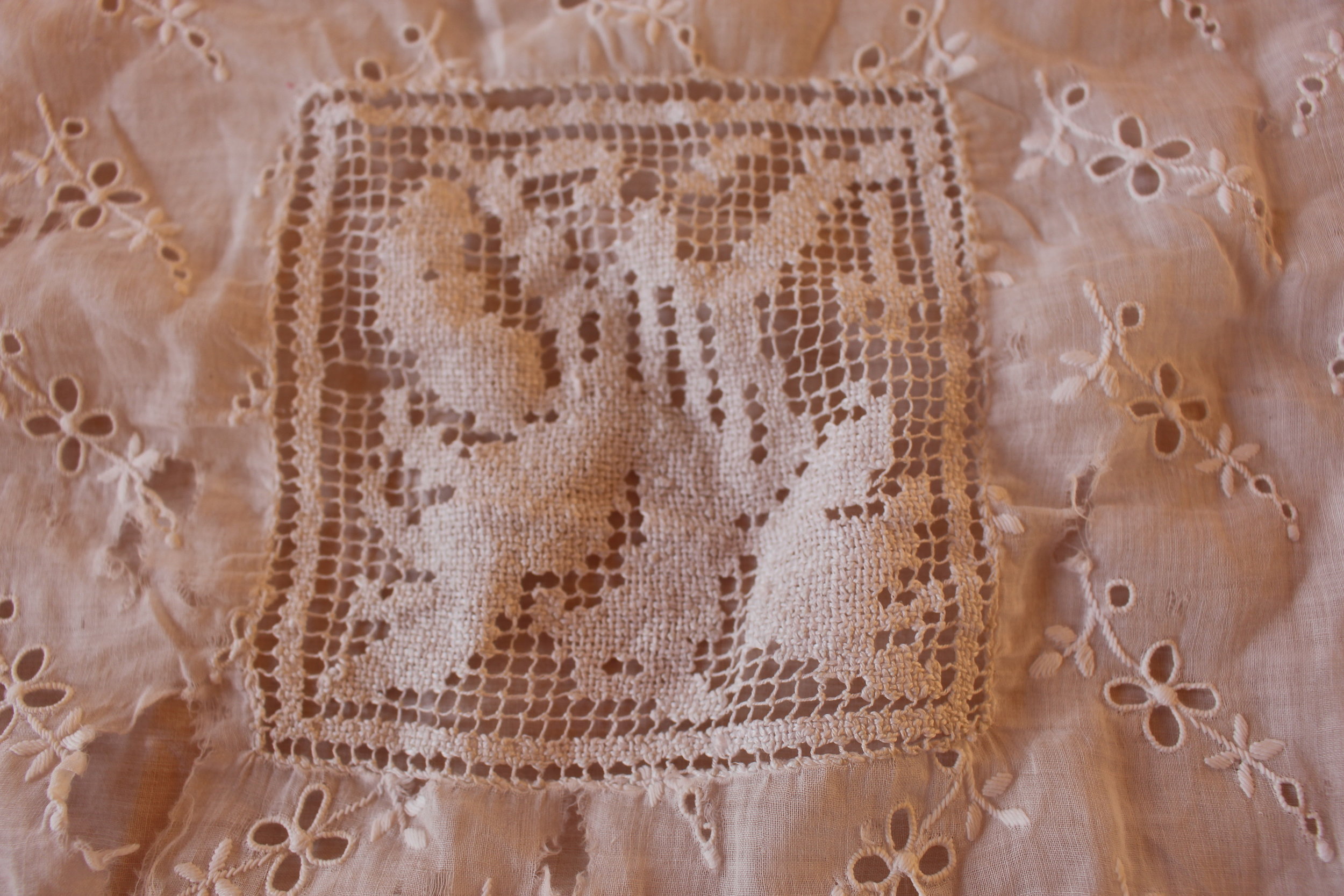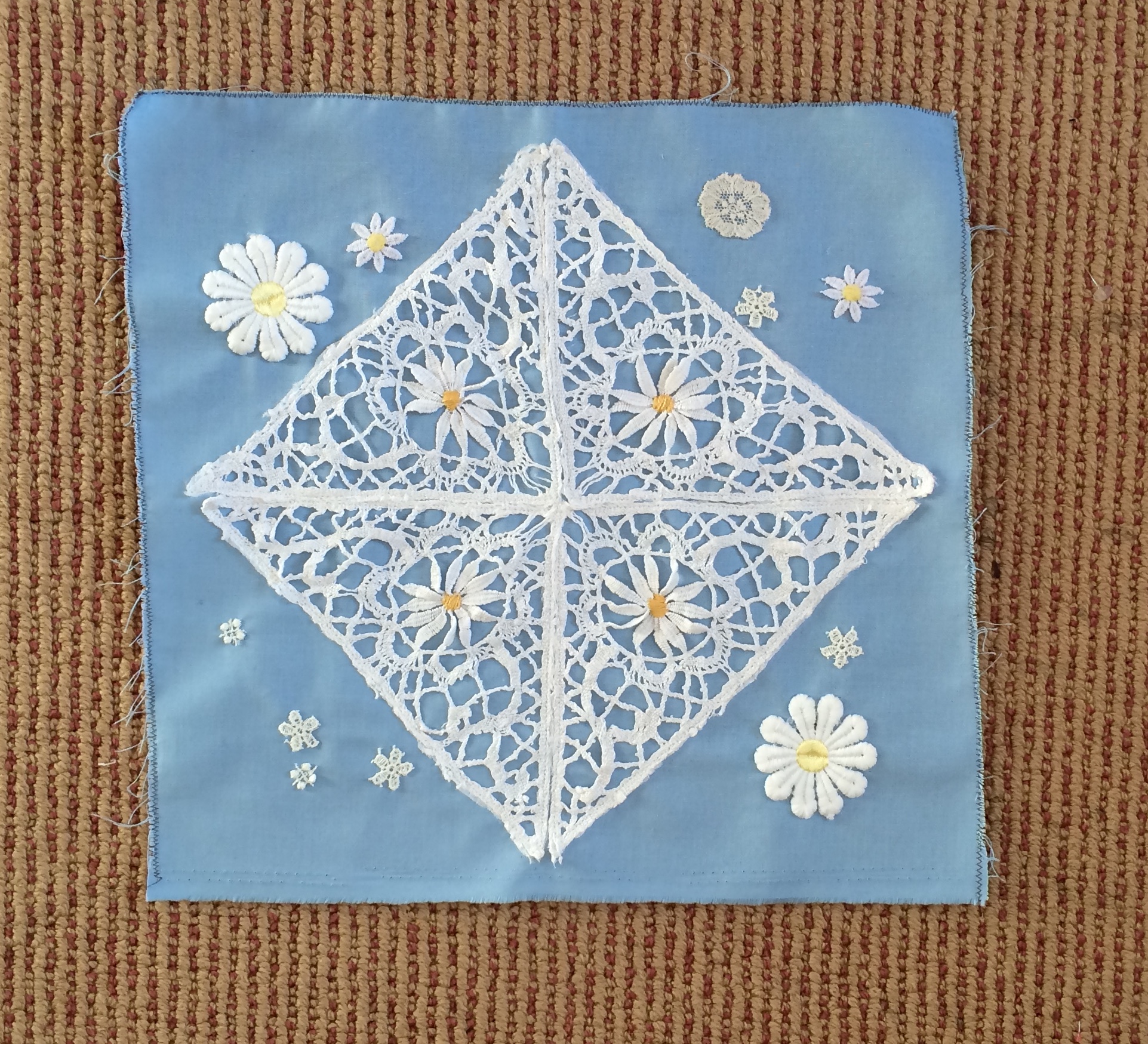Vintage Linen Revival Quilt 2017 - Block 2
/Hi everyone,
Having had a large box of old linens stashed in my cupboard for a long time, I am finally recycling and repairing and cutting and embroidering and attempting to make a new quilt old of old and very beautifully worked pieces of needlework. After being rather pleased with my first block, this next block is a different challenge. I have no plan for any of this, so I literally just pulled a piece out of box randomly and then thought about what to do. This time, it is a very lovely, very fine cushion cover that has a large tear in the middle of it. I have absolutely no idea where this came from or who might have made it originally, but I think it must have been an enormous amount of work.
It has a sort of Edwardian feel to it. It makes me think of those beautiful flowing white lacy dresses of the period and the accompanying white parasols that the ladies of the day, paraded in the park with. It is very light and rather fragile muslin and the embroidery is just exquisite. I am not an expert, but it looks as if it is mixture of machine and hand embroidery. The Broderie Anglais cotton muslin background fabric seems too evenly worked to be by hand, and yet when I look at the back, it could have been done by an expert hand. I am not sure. The central panel is certainly a piece of hand drawn thread work and the four corner triangles also look handworked to me. Having done this, I think this alone represents hours and hours of needlework.
I absolutely love 'Whitework' and although that term is a fairly broad brush stroke kind of phrase, it is useful to encompasses all these different techniques where the embroidery thread and the underlying fabric is white and can in fact be mixed and matched in one piece of work. I first learnt about some of these forms of embroidery when we lived in Russia and I took classes in russian embroidery and I even managed to make a few pieces myself. I revisited these techniques when I was studying for my City & Guilds Course and I loved them even more. It is time consuming and precise work, but it is so completely beautiful, there is nothing like it. In my opinion, it simply cannot be replicated by machines. I wanted very much to rescue this and utilise as much as I could for my project.
Looking at the fragile state of the fabric though, I wasn't sure where to start. I felt that I could cut the four triangles out along the bound edge of the pattern. I was nervous about causing fraying by snipping too close so left a about a quarter of an inch around the edge to begin with, but then trimmed them down with fine embroidery scissors. I also cut out the central rectangular panel and a band of the broderie anglais. I decided to work with the triangles first and set the rest aside for another block. Placing these triangles on different coloured backgrounds in different formats was fun to try out, but I settled on a lighter shade of blue than my last block.
I machine stitched the blocks down carefully around the edges and secured the centre of the woven flowers with a yellow stitch in Perle cotton #8 which made them look a bit like daisies.
There was a little repair work to be done at this point. One of the intricately woven threads had come undone and needed some attention.
I think the trick with this sort of thing is to use a thread that is a similar weight. In this case, I picked an aurafil mako #12 white thread. Here my years of doing Russian open work embroidery really paid off. I put two stitches length ways along the path of the damaged thread. Don't pull these too tight. Then simply wrap your thread around this group of threads all along the length of the strands, putting your needle through the loop each time to secure it. It produces an amazing strong and neat strand and once it was done and pressed, it hardly showed that it was a repair.
To make the block pop a little more, I decided to cut out some other lace motifs and some daisies which came from trimming that I bought on a haberdashery store on the market. I had used this technique in one of the projects for my City & Guilds course and really liked the effect, and infact I think it worked here. You need very sharp, fine embroidery scissors to be sure the you are not cutting the threads of the motif that you want to keep, otherwise it will unravel, but if you are careful, it can be a really pretty way to embellish a block.
Simply appliqué them with little stitches and they will be almost invisible because they just melt into the lace work on the motif once they are pressed.
So Block 2 is finished and already I am getting a sense of how this Vintage Linen Revival quilt might turn out.
There's a long way to go though. Hope you will check back around the start of next month to see Block 3.
Happy Weekend,
Ruby x









